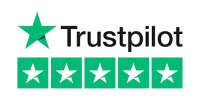How to optimise the design of Salesforce Sales Cloud for users
By Heather Black

How do you Optimise Salesforce Sales Cloud for your end users? During this five-part blog series we are going to look at the ways to maximise the features of Sales Cloud harnessing the power of third party apps to get a full end to end solution for your business.
- Part 1 – How to Optimise the Design of Sales Cloud for Users
- Part 2 – How to Implement a CTI for Sales Cloud
- Part 3 – How to take Payments in Salesforce Sales Cloud
- Part 4 – How to do Financial Accounting in Salesforce Sales Cloud
- Part 5 – Sales Cloud vs Revenue Cloud: What’s the Difference?

Subscribe and never miss out!
To stay up to date with Supermums blogs, latest news, training, course deadlines, offers, events and more, subscribe to our newsletter:
Part 1 – How to Optimise Salesforce Sales Cloud for Users
The first step to optimising Sales Cloud is to understand the business requirements by conducting a Business Analysis Workshop with stakeholders.
What Business Analysis Questions do you want to ask about Sales Cloud?
The Sales Cloud Discovery process could include a whole range of aspects including the following high level requirements:

Within the Supermums Consultancy Skills Skills Course, sponsored by Cloud Gaia, we provide a full Business Analysis Questionnaire for Sales Cloud , Online Payments, and Non-Functional requirements with a presentation deck and a training session on how to deliver it alongside the technical considerations. If you are worried about what questions to ask then check out our course here.
Here are 5 of favourite questions you don’t want to miss but there are loads more functional and non-functional requirement questions that you want to include in your questionnaire:
- What are their different products, services and customers, are their multiple sales teams and where are their teams and customers located globally? This will influence how many different project life cycles you will need to deliver e.g. multiple discovery workshops through to training sessions and also whether global influences are relevant such as languages and currency considerations.
- What are the pain points and key benefits they want to derive from Salesforce as a Sales Team from different points of view – as an organisation, a team and individually?
- How would the company measure the ROI of the Salesforce investment and how can this be measured? What are the baseline stats now and what do they want it to be in the future. It can be useful to have some example indicators here to share in case they aren’t sure.. For example, increase in conversion time, increase in repeat customers, increase in conversion of leads funnel, increase in lead rating ratio, increase in calls booked.
- How is Sales Performance measured? What are their key reports and dashboard requirements as they will influence how you build the system. Again it can be useful to have some example indicators here to share in case they aren’t sure. e.g. no of calls booked per week, no of converted leads, value of closed deals, no of deals in the pipeline, against targets.
- What is their Sales Process? Within this there will be multiple functional questions and technical considerations to ask, especially to discover whether the Sales Cloud functionality needs extending to integrate with third party apps to integrate online payments, e-signature contracts or reconcile with accounting software. This will inevitable increase time and budget for any project.
How to meet Sales Teams Requirements
Let’s delve into what can Sales Cloud and Extended Functionality harnessing the power of ISV’s can offer. When you are discussing requirements with the sales team you want to be proposing scenarios that educate the users on what’s possible.
Here are 11 different channels of how a Salesforce Lead / Opportunity could be created:
1 – LinkedIn Integration e.g Pipelaunch
2 – E-commerce integration
3 – Online form with payment integration
4 – Direct Payment merchant integration
5 – Web to lead form
6 – Manual creation by user
7 – Outlook to lead
8 – Social Media to lead
9 – Live web chat lead
10 – E-signature solution
11 – Landing pages e.g Pardot

6 different ways a user could be notified about a lead:
- Queue
- Task
- Dashboard
- List View
- Slack
4 ways to allocate leads to users:
- Queue
- Lead Routing and Assignment Rules e.g. country, round-robin, interest etc.
- Manual
- Flow
6 ways to track where sales are in the sales funnel:
- Lead Status
- Lead Rating
- Opportunity Stage / Sales Path
- Probability
- Forecasting
- Pardot Score
How to extend the functionalities of Sales Cloud with different types of third-party apps:
1 – Online Payments – There are different ways you can take online payments, which could include:
- E-commerce integrations are best for organisations trying to sell multiple products to consumers at once – e.g. Commerce Cloud, Third Party E-Commerce Solution
- Integrated Payment Gateway Solutions are best for high-volume one-off payments. Can you also be used for multiple payments but an e-commerce solution might be better
- Online Form Solutions with a Payment Merchant Integration are best for small volume one-off payments as a cheaper quicker solution
2 – Sealing the deal – You can speed up closure rate of deals using third party apps
- Automated Contract Generation
- E-Signature Solutions
3 – Monitoring Progress – You can improve the visibility of sales interactions and communication between a team using the following third party apps
- AI Tools
- CTI Integration
- SMS Integration
- Pardot Integration
4 – From Sales to Finance – You can coordinate sales to finance management to ensure seamless effort management using Integrated or Native Third Party App Accounting System.
Find out more about our Supermums and the Salesforce Training courses that we offer:

Written By:
Subscribe To Our Weekly Top Tip Bulletin
Get Updates And Learn From The Best












